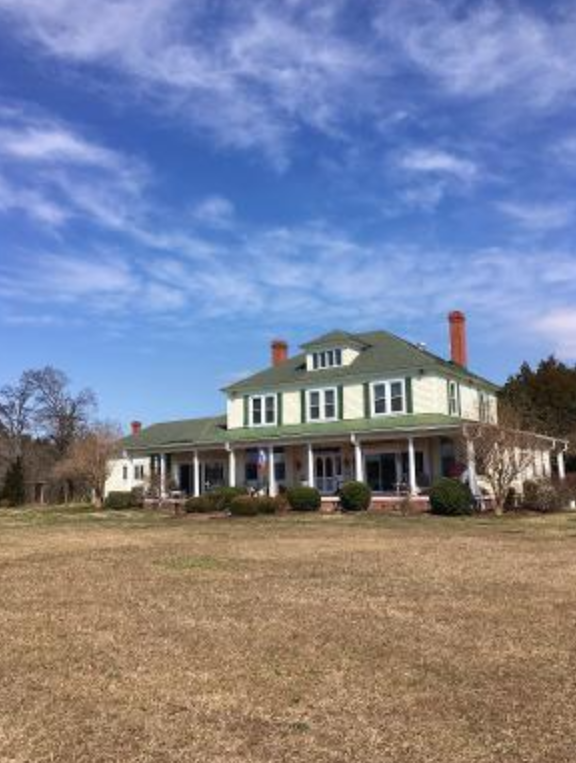
Share This Article On Social Media:
Explore Similar Categories:
By Rob Warner, local historian, Deer Chase Subdivision resident
NOTE: This paper is primarily based on an interview with the current owner of Pipe-In-Tree Farm, Ron Kauffman. Some additional data was from Mary Ann Willis, Pipe-In-Tree Subdivision, and Jeanette Pitcher, Oxford, Alabama.

The current owners of Pipe-In-Tree farm have been caring for it for almost 40 years. Ron and his wife, Eugenie have been great stewards of the property and its history. This story, the name, and original legend need to be told, so let us go back to early Colonial times, the 1600’s.
THE LEGEND, At a very early part of European settlement in the Piankatank River Valley, local Indians and early settlers got off to a bad start with a limited conflict on the river. Trying to make peace, the Indians and English met on high ground on the north shore of the Piankatank, maybe 7 or 8 miles upriver, from the river’s mouth. The Indians invited the settlers to smoke the Indian peace pipe. This happened and had religious meaning to the Indians. They agreed on peaceful co-existence. To mark the spot, and maybe meet again, they placed the peace-pipe in a crotch of a young red oak at the site., Well, today (over 300 years later) the pipe could be inside the huge nodule on the side of this tree. A tumor that engulfed the peace pipe? The Red Oak tree is now a giant with trunk 31 feet around at the base. How do we know we have the right tree. Oral and some written history have always described it and its location. This location was important later in history. When was this meeting? As this story moves forward in time it will try to answer that question and provide more interesting history.
1608 Captain John Smith was a leader in early Jamestown and explored the Chesapeake Bay. He explored the Piankatank River from 29 August to 1 September 1608. He anchored at the mouth of the River the night of 29th. . They explored the river up to the King’s House and a large village on 30 August and anchored there. The next day they explored upriver to what became Turks Ferry, then an active smaller Indian village. Moving above that into the Dragon stream and swamp, they went as far as an empty Indian hunting camp, returning to the King’s House that night. The Kings House was a major village, where Piankatank Shores subdivision is today and less than ½ mile from the Pipe-In-Tree. By 2 September they sailed/rowed down the river and out into the Bay traveling south. All this time, the Indian King was away hunting. This was the first known contact between the English and Piankatank Indians. (Much of this information in this section was taken from the significant book, “John Smith in the Chesapeake” by Edward Wright Haile, Tappahannock, VA., 2008)
This author suspects that the Pipe-In-Tree Legend was formed over these three days. We have the dates and location. Several times during John Smith’s exploration, he was greeted with showers of arrows when approaching an Indian village. This could have been the legend’s brief conflict. While the chief was away, Smith could have made contact with other elders. Meeting a short distance from the village was possibly safer and more predictable for both parties. Perhaps most important, Smith wanted to secure peaceful trading rights for Indian Corn which would be very needed for the upcoming winter at Jamestown. The English were not growing enough corn to survive at that time. He was granted corn trading rights by the Piankatank Indians at the end of the encounter. (Peaceful Co-Existence)
1642 to 1648 As history shows, the English eventually forced the Indians out and took their land. In 1642 tensions between the groups rose as scattered English settlements started. In 1644 the Second Indian massacre of English occurred, with 500 English killed. A treaty was signed in 1646 that gave the entire Northern Neck to the Indians, This act created one of the first reservations in what became the United States. At that time the Northern Neck started on the north shore of the Piankatank (also referred to as the third river, James first, York second, Piankatank third). This reservation was called the Chicacone Indian District. Then after only 2 years, the English forced all Indians into a much smaller 5000-acre reservation near where the town of Kilmarnock, Lancaster County is today. So by 1648, there were no Indians permanently located on the Piankatank. Thus, the Legend probably occurred between 1608 and 1648.
1665 In this time frame, Augustine Smith already had a large plantation in Gloucester County on the south shore of the Piankatank. He went directly across the Piankatank and started Shooters Hill plantation of 1274 acres in Middlesex County. Pipe-In-Tree farm was originally part of Shooters Hill. Later when the land was divided, Pipe-In-Tree farm was 596 acres.
1715 By 1715 the Piankatank valley was settled and producing tobacco and lumber. The Middlesex Christ Church Vestry and Sheriff periodically had processions to make sure property lines were not illegally moved. Two responsible men from the immediate area checked property borders in a roughly 7-mile distance (area) of the main road (today Storemont road or 629). They were given 4 to 5 months to do this task. Joseph Gore (ancestor to today’s Al Gore former Vice-President of the United States) and William Blackbourne performed this task from Pipe-In-Tree to Kemp’s mill, both these points were used because they were well-known set-points or markers.
1814 During the War of 1812 the White House was burned by the British in Washington D.C. After the war ended the White House was rebuilt. Oak timbers for the roof came from this part of Middlesex County. Shooters Hill was an important lumbering plantation, thus the White House roof lumber may have come from Shooters Hill of which Pipe-In-Tree was part. That roof lasted over 100 years until the White House was remodeled during the Truman administration.
1840s This is the estimated time for the construction of Healy’s Mill and Mill Pond. It was in operation by the 1850s. In this time frame, Healy’s mill and dam replaced Pipe-In-Tree as the locator point, or set point with Kemp’s mill to do the property boundary point checks in the official processions. Pipe-In-Tree and Healy’s mill properties adjoin each other.
1898 to 1900 The current Pipe-In-Tree farmhouse was built. A truly grand three-story home. It is still the jewel of the upper Piankatank River.
1950 to 1984 Pipe-In-Tree farm was purchased by Dr. Floyd Millard Riddick and contained 596 acres. He earned his university degrees from, Duke, Vanderbilt, and again Duke for his Doctors degree in Political Science. He was a very famous and important person in Washington D.C., both before and after World War II. At the height of his career, he was Parliamentarian of the United States Senate from 1964 to 1974. He brought American history to Pipe-In-Tree farm by the many important people he took with him to relax and have private meetings at the farm. People important enough that an underground bomb shelter was built next to the house during the 1950s to 1980s Cold War. During an extensive interview in 1978, he was asked about what he did to relax and occupy his time away from his key U.S. Senate position. He said his first personal interest lay in a farm in Virginia. Its location was not mentioned.
1984 to Present. The current owner purchased Pipe-In-Tree farm in 1984 with the house, but only 40 acres. Later most of the other 556 acres became Pipe-In-Tree subdivision. Over the last 40 years, the home and smaller acreage have been extensively improved to enhance the location’s beauty. The three Kauffman children were raised here: Christopher, Jennifer, and Deborah. It was a central meeting place for large social gatherings due to its size and the Kauffmans’ generosity. A great personality who frequently visited here in recent time was the former pastor of the local Catholic Church, “Church of the Visitation” in Topping, Father John Bodie (now deceased). Father Bodie was an extremely charismatic person who improved the lives of many Virginians including, this author and the Pipe-In-Tree Kauffman family. In summary, Pipe-In-Tree farm is a spot in Middlesex County, Virginia noted for its place in history, great location, and beauty.


